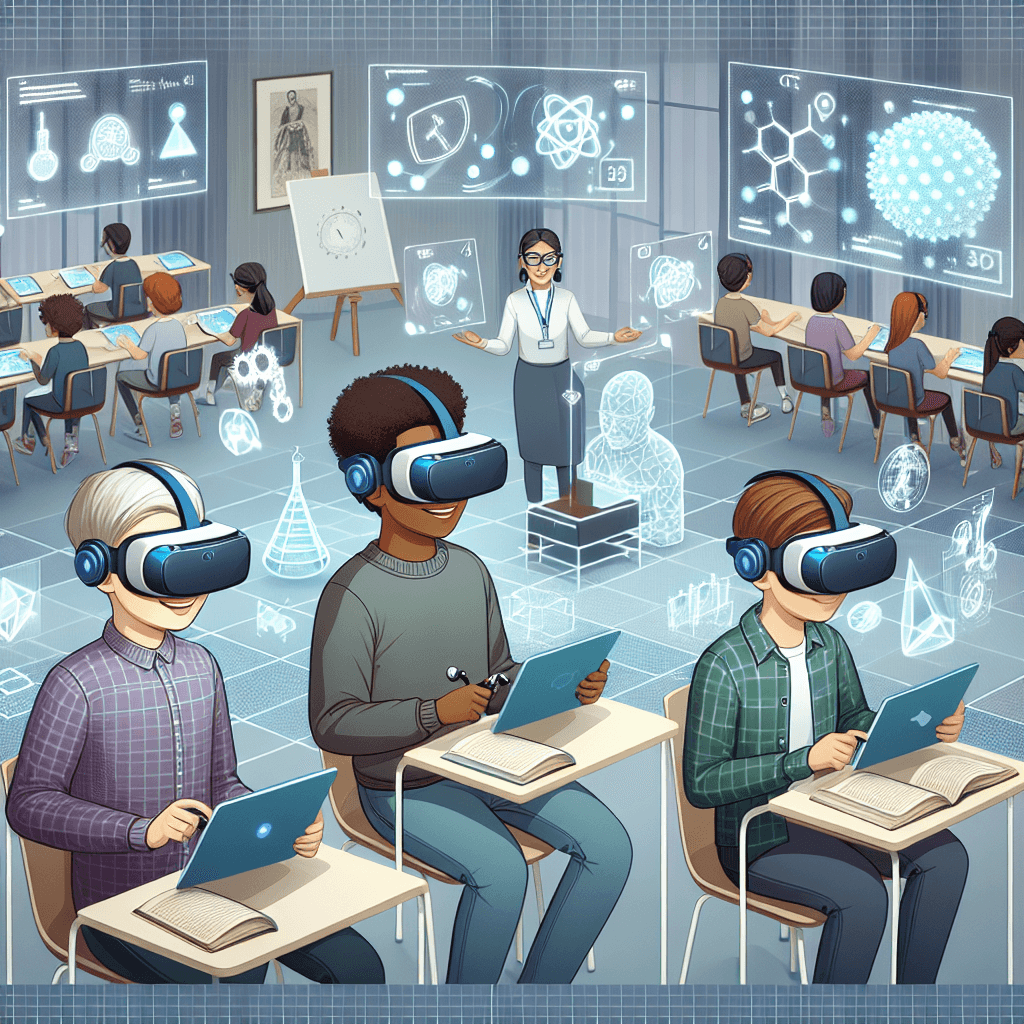Virtual Classrooms, Real Learning: VR and AR's Educational Revolution
Gone are the days of passive learning, confined to the walls of a classroom and limited by static textbooks. Today, a new era of education is dawning, driven by the transformative power of Virtual Reality (VR) and Augmented Reality (AR). These immersive technologies are revolutionizing how we learn, making education more engaging, experiential, and effective.
Stepping into the Future: VR's Educational Playground
Imagine studying the skeletal system by virtually holding and rotating a 3D human skull, or journeying through the Amazon rainforest without leaving your classroom. This is the power of VR. By creating immersive, simulated environments, VR transports learners to different worlds and time periods, transforming abstract concepts into tangible experiences.
The advantages of VR in education are numerous:
- Experiential Learning: VR allows for learning by doing, a far more engaging and effective method than traditional passive learning. Students can conduct virtual science experiments, build historical monuments in a simulated environment, or even step into the shoes of historical figures.
- Increased Engagement and Motivation: The immersive nature of VR captures students' attention and makes learning inherently more exciting. This increased engagement often leads to improved knowledge retention and a deeper understanding of the subject matter.
- Safe and Controlled Environment for Practice: VR provides a safe space to practice real-world skills. Medical students can perform virtual surgeries, aspiring pilots can navigate simulated cockpits, and future engineers can design and test virtual prototypes – all without any real-world risk.
Augmenting Reality, Enriching Education
While VR creates entirely immersive digital environments, AR overlays digital elements onto the real world, enhancing our perception and interaction with our surroundings. Imagine pointing your smartphone at a textbook and seeing 3D models of the concepts you're studying come to life, or taking a walk through your neighborhood and receiving pop-up information about the local flora and fauna.
AR offers its own unique benefits to the educational landscape:
- Interactive and Engaging Learning Materials: AR can transform static textbooks and worksheets into dynamic, interactive learning tools. Imagine scanning a page about the solar system and watching the planets orbit the sun in 3D right before your eyes.
- Accessibility and Affordability: Compared to VR, AR technology is often more accessible and affordable. Smartphone apps and tablets can easily be integrated into existing educational settings.
- Real-World Applications and Contextual Learning: AR bridges the gap between theoretical knowledge and real-world application. Students can learn about architecture by using AR to visualize building plans superimposed on a construction site or understand geometry by manipulating virtual shapes within their own environment.
The Future is Here: VR and AR in Action
The impact of VR and AR is already being felt across various educational settings:
- K-12 Education: Students can explore the Egyptian pyramids, dissect a virtual frog, or travel through the human circulatory system – all from their classrooms.
- Higher Education: Medical students can practice complex surgical procedures, engineering students can design and test virtual prototypes, and history students can experience historical events firsthand.
- Corporate Training: VR and AR provide cost-effective and engaging training solutions, allowing employees to acquire new skills in realistic, simulated environments.
Embracing the Future of Learning with 01TEK
The integration of VR and AR into education marks a significant leap forward in the evolution of learning. As these technologies continue to evolve, we can expect even more innovative and immersive educational experiences.
Ready to explore the future of learning? Visit 01TEK today and discover a world of possibilities with our dynamic and engaging VR and AR-powered courses. Step into virtual classrooms, interact with cutting-edge simulations, and unlock your full learning potential.
You’ve got to stop doing all the things that people have tried, tested, and found out don’t work.
Michael Dunlop



